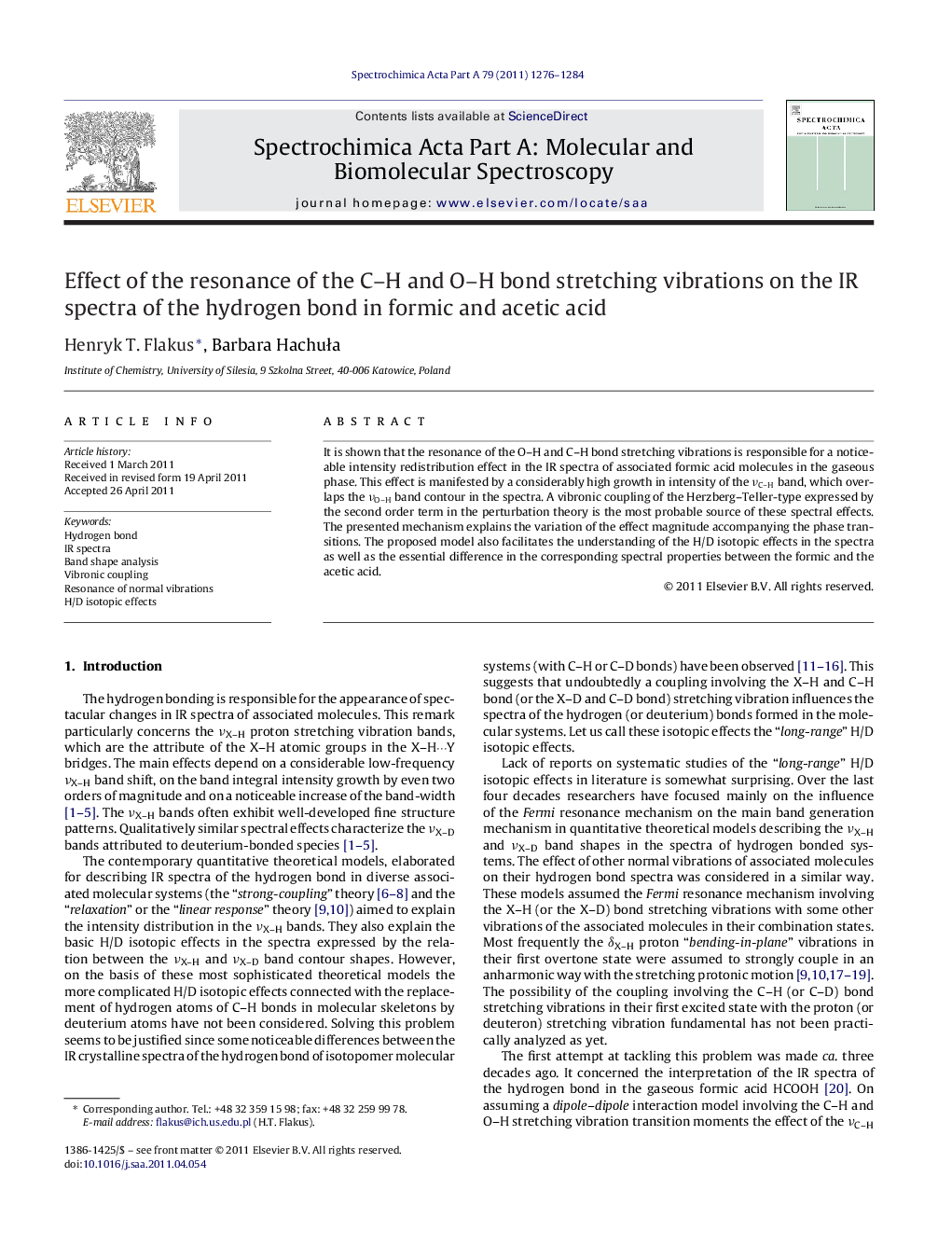| Article ID | Journal | Published Year | Pages | File Type |
|---|---|---|---|---|
| 1236519 | Spectrochimica Acta Part A: Molecular and Biomolecular Spectroscopy | 2011 | 9 Pages |
It is shown that the resonance of the O–H and C–H bond stretching vibrations is responsible for a noticeable intensity redistribution effect in the IR spectra of associated formic acid molecules in the gaseous phase. This effect is manifested by a considerably high growth in intensity of the νC–H band, which overlaps the νO–H band contour in the spectra. A vibronic coupling of the Herzberg–Teller-type expressed by the second order term in the perturbation theory is the most probable source of these spectral effects. The presented mechanism explains the variation of the effect magnitude accompanying the phase transitions. The proposed model also facilitates the understanding of the H/D isotopic effects in the spectra as well as the essential difference in the corresponding spectral properties between the formic and the acetic acid.
Graphical abstractThis paper presents the influence of the C–H bond stretching vibrations on to the IR spectral properties of hydrogen bonds in associated molecular systems.Figure optionsDownload full-size imageDownload as PowerPoint slideHighlights► The gaseous spectra of formic and acetic acids were qualitatively analyzed. ► The resonance of νCH and νOH vibrations in formic acid molecule was observed. ► A vibronic coupling mechanism was the most probable source of this resonance. ► This problem has been never considered in the literature.
